How to Pick the Right Freemium Strategy
A framework to determine the right free model for every product.
SaaS Pricing is hard. PricingSaaS is your cheat code.
Monitor competitors, track real-time benchmarks, discover new strategies, and more.
Hey y’all,
Hope this finds you well!
Last post, we covered the 3 primary free models to choose from. Today, I want to take it a step further by introducing a framework to navigate the options.
This post has two parts:
First, we’ll navigate the Freemium Decision Tree to clarify the conditions that make each free model suitable for a given product.
Next, we’ll dig into three specific examples (Snowflake, Zoom, and Notion) to highlight the tradeoffs companies have had to make in real life to optimize their freemium strategy.
Fair warning, today’s post is the longest I’ve published on Good Better Best. It’s the first time Substack has told me the post is “too long for email” so you’ll notice a call-to-action at the end directing you to read the full post in the browser.
Before we get into it, a word from Good Better Best’s first sponsor 🎉 - if you’re interested in getting your brand in front of ~2,500 product leaders, investors, and founders - give me a shout!
The Freemium Decision Tree
Last week, we went through the Flavors of Free to highlight the 3 primary constraints that you can use when offering a free version of your product. Along with having 3 models to choose from, there are additional nuances to consider, specifically…
Free trials can be usage-based or time-based with any duration you choose
Faux Free freemium plans can be limited on a range of usage constraints
Perpetual Value freemium plans can be limited to any features you choose
When you add the ability to mix and match, you can see how designing a freemium plan quickly becomes complex. Simply put, there are a lot of decisions to make, and it can be overwhelming to think through all of them simultaneously.
The Freemium Decision Tree reduces decision fatigue by forcing one decision at a time. It’s a tool that allows an operator to evaluate the Flavors of Free in the context of their product, market, and team to determine the optimal constraint to anchor a free product strategy.
The Freemium Decision Tree consists of 3 primary decisions. Let’s jump into the first.
Decision 1: Free Trial vs Freemium
The first decision is whether or not you want to offer a free trial or a freemium plan.
This is a simple question of whether or not you want to enforce a hard limit on free access, which often boils down to your tolerance for delayed monetization. With a free trial, there are two options for constraints: time and usage.
Time is self-explanatory - a user can access your product for free for a defined window, usually anywhere from 7 to 30 days.
Usage depends more on the nature of the product and the usage constraint you choose. Most modern usage constraints are susceptible to manipulation, meaning users can stretch the limits to maintain free access (also called a "soft cap"). A usage-based free trial has a hard cap, meaning once a user reaches a defined level of usage, they don't get any more.
Determining if you should limit time or usage isn't always straightforward, but there are specific conditions that make a product particularly suited to use time as a constraint.
Time-Based Free Trials
The key to successfully using time as a constraint is leveraging loss aversion to drive paid conversion as much as possible. Put simply, you want a trial user to have such a positive experience with your product that by the end of the trial window they’ll pay to keep using it. Often, this means giving trial users unlimited access to the product. That means removing caps on usage and functionality and only limiting the window that someone can use the product for free.
Of course, there are exceptions - some products have costs that make unlimited usage within a trial unrealistic. That said, if you're using time as a usage constraint, you probably want to be generous with usage and feature access because it increases the chance a new user gets hooked on your product during the trial window.
Some products are better at cultivating a sense of loss aversion than others. Last week, I mentioned Hubspot’s marketing suite. When prospects uploaded their email database, installed the Hubspot tracking code on their website, and started to see a 360-degree view of their leads and opportunities, they wouldn’t want to give it up after 30 days.
If we limited the number of contacts users could import or the features they could access, it might have made the trial experience less impactful.
That said, while offering unlimited features may increase the stickiness of a product during the trial, it also has risks. Specifically, if you give a new user access to your entire solution, they may not know where to start.
This dynamic means that time-based free trials are often better suited to products that have a strong onboarding function, either in the form of Sales or Customer Success, to help users get the most out of the trial experience. Tying it back to Hubspot, we had a massive inside sales team fielding trial requests and helping users get the most out of their 30 days.
Another factor to consider is whether or not it's even possible to offer a stripped-down version of your product for free. If it feels impossible to unbundle your product into a lightweight version limited on features or usage, then limiting time might be the best choice.
To recap, your product could be a great fit for a time-based free trial if:
Your product can cultivate a strong sense of loss aversion
You have the resources to help users get the most out of their trial
You can’t see a path to offering a lightweight version of your product
If you can check at least one of these boxes and find you are a fit for a time-based free trial, then the last decision to make is the duration. This comes down to a few factors - ease of onboarding, time to value, and the kind of trial experience you're looking to cultivate. It also depends on how much you want to leverage loss aversion. The longer the trial, the more powerful loss aversion becomes.
For instance, with Hubspot's 30-day free trial, we wanted to introduce prospects to their desired state and use loss aversion to get them hooked. With that in mind, giving prospects 30-days in the tool made perfect sense.
Alternatively, a product like GoToWebinar offers a 7-day free trial, giving free users just enough time to set up, run, and analyze the impact of a webinar with their platform. If you want to leverage loss aversion, offer a longer trial; if you want to drive a specific action with your product, but only within a short window, offer a shorter trial. Another option for this use case is to offer a usage-based free trial.
Usage-Based Free Trials
One downside with time-based free trials is people are busy, and just because they sign up, doesn't mean they'll actually use the product within the given window. Comparitively, a time limit isn't exactly user-friendly. That's where a finite, usage-based free plan can help.
If you have a low tolerance for delayed monetization, but don't think a time-based free trial is a fit, a hard usage cap on your free plan is basically like a free trial with better optics. While you can't call it free forever, you're allowing prospects to use your solution at their own pace and timeline.
An example of a usage-based free trial is Headspace, which offers 10 introductory meditation sessions for free. While a user can listen to those 10 sessions multiple times, unless they upgrade, they won't be able to move beyond them to access new sessions.
If you choose a usage-based free trial, the next decision to make is which usage constraint to choose, and lastly, what volume or level of access to offer. It's important to think about how your usage constraint and level of access tie into the value of your product, and how they compare to competitors.
Case in point, Headspace could have chosen mindful minutes as their usage constraint, or they could have limited their free plan to 5 sessions. Instead, they chose meditation sessions, offering the first 10 for free in hopes that driving habit formation would help free users build enough momentum to upgrade to a paid subscription.
Regardless of what kind of free trial you offer, once a user reaches the limit, they're done. This inherently ensures you aren't cannibalizing revenue. That said, once users are done, if they don't convert, that's pretty much it. You don't get to benefit from watching how they use the product or the ongoing word-of-mouth of an active user. Sure, you can try to nurture these users into paying customers, but it's more of a shot-in-the-dark than nurturing someone with ongoing usage.
This is where soft-cap and perpetual freemium plans come in. If you have a higher tolerance for delayed monetization and want to experience the benefits of freemium that stretch beyond the balance sheet, then the next decision to make is which type of Freemium plan is right for your product.
Decision 2: Faux Free vs Perpetual Value
Remember back to the Flavors of Free and that the difference between Faux Free and Perpetual Value freemium is the key constraint. Faux Free freemium plans limit usage, while Perpetual Value freemium plans limit features and functionality.
Deciding between Faux Free and Perpetual Value freemium depends on two primary factors: your product and market, both of which likely influence your appetite for delayed monetization. Notably, many companies limit both features and usage, which we’ll explore in a future post. As discussed last week, even those products that limit both have a key constraint, which is what we’re trying to navigate here.
Faux Free Freemium Plans (Limiting Usage)
When deciding between usage and features as a key constraint, one thing to consider is whether or not the product has proven features or functionality that can be monetized separately. In other words, do customers only need your core functionality? Or are there additional features that customers would be willing to pay for?
If customers generally have simple needs for your product, offering a Perpetual Value freemium plan may be risky. If you’re already concerned with free-to-paid conversion, the last thing you want to do is offer a free plan that customers can use in perpetuity. If it feels difficult or impossible to unbundle your features into a core offering that you feel comfortable offering for free, then limiting usage is probably the better choice.
When limiting usage, it's important to have a solid understanding of how customers use your products, specifically as it relates to your usage constraint. You want to make sure the limit you're imposing will provide enough value to free users without cannibalizing revenue.
Let’s take an example from the last post: Miro.
Miro’s core functionality comes down to its digital whiteboard. If you look at the key differentiators between the free and team plan, you’ll see a lot of feature differentiation, but none are really “must-haves” for customers with simple needs.
If Miro were to offer a free version with unlimited boards, it would cannibalize a lot of revenue. Because of that, they limit usage, capping the free plan at 3 boards. Miro likely has a wealth of customer data that shows how many boards their customers use over time, giving them confidence that 3 boards are sufficient to get started with Miro, without allowing users to stick with free forever.
Perpetual Value Freemium Plans (Limiting Features & Functionality)
On the other side, Grammarly has a long list of features and functionality that they monetize in paid plans, giving them the confidence to offer a perpetual value freemium plan with the basics: grammar, spelling, and punctuation.
Notably, I would also imagine that usage is harder to quantify for Grammarly than Miro as users likely have a wider range of usage patterns, making it difficult to determine the right level of usage for a free plan. Further, beyond user licenses, Grammarly's pricing doesn't have any usage components. Limiting the free plan to 30 suggestions per month or something like that could feel like nickel-and-diming and frustrate users when they reach the limit.
If it's feasible to give away core functionality, and your product has proven features you can monetize, a perpetual value freemium plan will endear you the most to customers. Further, their continued usage of the product keeps free users in your funnel, allowing you to nurture them into paying customers over time. Even if they never convert to paid, you can learn a ton from how free users are using your product and if they actively use your product for free then they'll likely give you positive word-of-mouth.
Decision 3: Picking a Constraint
Regardless of the Freemium option you choose, the third decision is to pick your key constraint. This creates two different paths depending on which freemium plan you chose.
If you pick a Faux Free freemium plan, you know you’ll be limiting usage, but the question becomes - which usage constraint, and what level of usage?
If you pick a Perpetual Value freemium plan, the question becomes - which features or functionality do I give away in perpetuity?
Picking a Usage Constraint
If you choose a Faux Free freemium plan, the next choice is to determine your usage constraint.
The usage constraint is usually tied to the core value of your product, so the limit on the usage constraint ensures the free plan doesn’t cannibalize revenue. That said, there are usually a number of constraints a company can choose from, with varying impacts on competitive optics and the likelihood of cannibalizing paid revenue. Usually, the more likely the constraint cannibalizes paid revenue, the more favorable it will look competitively.
Bringing it back to Miro, they had several options to limit their free plan. They could have chosen to limit users, boards, integrations, or anonymous viewers, along with other usage axes.
As you know by now, Miro chose to limit boards, and the reason fits perfectly with the purpose of their platform. Had Miro limited users, integrations, or anonymous viewers, it would have directly restricted collaboration, which is their main value prop.
Instead, they chose to limit boards, and offer unlimited users, anonymous viewers, and core integrations. By doing this, they’re fostering unlimited collaboration in hopes that free users will blow through the 3-board limit. While some free users likely re-use boards to avoid having to pay, that's inevitable. Most heavy users will grow tired of re-using boards and upgrade to get the full value of the solution.
Picking a Feature Constraint
If you choose a Perpetual Free plan, then the next choice is to determine which features to offer in the free plan, and which to limit to paid plans.
Often, a perpetual value freemium plan will offer a single feature category for free, while monetizing other feature categories separately. If possible, it helps to have a thematic barrier between the free plan and paid plans. A few feature themes that we've seen monetized frequently are Team/Workspace features, Automation, Customization, and Support.
Bringing it back to Grammarly, they categorize their entire free offering as basic writing suggestions. If you want more than basic spelling, grammar, or punctuation, then you need to upgrade to a paid plan. Also, if you want to use Grammarly across your entire team and unlock team features you need to upgrade as well.
Navigating the Freemium Decision Tree
Now that we've laid the foundation of the Freemium Decision Tree, let's walk through it with a few examples to highlight the tradeoffs and decisions companies have had to make in real life.
Example 1: Snowflake ❄️
Looking around the subscription landscape, free trials are less common than they used to be. Broadly, it feels like operators are getting more and more comfortable with delayed monetization. With that in mind, I want to highlight an example of a company that's been in the spotlight lately that's thriving with a free trial - Snowflake.
For Snowflake, the value of their platform comes from giving customers full flexibility over their data. Because of this, it's difficult to strip down a minimalist version of the product and offer it for free in perpetuity.
Additionally, once developers start using Snowflake, they fall in love with what the platform enables them to do with their data. There’s a serious sense of loss aversion once they get into Snowflake's ecosystem.
Lastly, according to Nathan Latka, ~40% of Snowflake's employees are in sales.
If you remember back to the conditions that we outlined that make a product a good fit for a time-based free trial, Snowflake checks every box:
Difficult to offer a stripped-down version of the product? Check.
Sense of loss aversion when users can't access their platform? Check.
Large Sales team to support customers throughout the free trial? Check.
Given these conditions, it's no surprise Snowflake offers a Free Trial instead of a Freemium plan. Taking it a step further, one nuance of Snowflake's pricing is that they use a credit model. Without going too far into the weeds, they've tied credits to various levels of usage with their product, creating a clear relationship between usage and cost. Offering a stripped-down version of the product for free in perpetuity would feel misaligned with their pricing strategy. Even offering a 30-day trial with unlimited usage could feel misaligned with the rest of their pricing model.
With this in mind, it should come as no surprise that Snowflake quantifies the value of their free trial down to the dollar - $400 to be exact.
While this may seem strange, the optics are genius.
Essentially, Snowflake is planting the seed that there’s a cost associated with using their platform, and by offering a trial, they're handing you a $400 gift card to use their product. Their product, pricing strategy, and team are perfectly positioned to offer a successful trial experience, and the results seem to validate that it's working.
Example 2: Zoom 🎥
With Zoom, the first decision in the decision tree is a bit more complicated. Unlike Snowflake, Zoom does have the ability to offer a stripped-down version of their product for free - giving them the option to choose either a Free Trial or a Freemium plan. Zoom also has a large salesforce that could support prospects during the trial period if they went that route. However, the last condition that makes a product a fit for a free trial is the sense of loss aversion that comes with losing access to the product. This is where Snowflake and Zoom differ widely.
Snowflake gives engineers visibility into their data that they've never had before. If a user loses access to Snowflake, they can't just move over to a new platform and get the same value. This gives Snowflake a powerful sense of loss aversion that they can leverage in their trial experience.
Video-conferencing is different. You don’t really lose anything when you switch providers, and it’s not hard to learn a new solution. Over the past 5 years, I’ve used GoToMeeting, Webex, UberConference, and Zoom, and the learning curve has never taken more than a day. Video-conferencing is more or less a commodity in that sense.
Zoom understood this dynamic and decided to go the Freemium route. The next step was determining which type of Freemium strategy made the most sense, Perpetual Free or Faux Free. It's important to consider what Zoom's competitors were doing at the time since the competitive landscape factored heavily in Zoom's decision-making process.
Zoom's top competitors at the time were GoToMeeting, Webex, Join.me, and Skype. While GoToMeeting offered a free trial, the rest of the top competitors offered Faux Free Freemium plans with their key constraint being number of meeting participants. Here’s what the actual limits looked like:
While Zoom could have experimented with a perpetual free plan, it would have been challenging. Most organizations have simple needs from their video-conferencing solution, and giving away core functionality for free would have risked severe revenue cannibalization.
Instead, Zoom joined the competition along the Faux Free track. However, it’s within this framework that they ventured out on their own. The third decision in the Freemium Decision Tree is picking a constraint, and this is where Zoom swerved their competitors.
The classic challenge with Faux Free plans is balancing customer value with revenue cannibalization. Give away too little value and customers won’t be able to use your app sensibly. Just think about the Webex Freemium plan, which limited usage to 3 participants per meeting. On the other hand, if you give away too much value, you risk offering a free plan that customers can use in perpetuity, cannibalizing revenue from paid tiers.
While Zoom's competitors embraced meeting participants as the primary usage constraint, there are other limitations that could work for video conferencing. Here are some of the options Zoom could have chosen as their primary constraint:
Number of participants per meeting
Number of meetings per month
Meeting Duration
Zoom’s competitors used meeting participants as their primary constraint. This is where Zoom swerved.
While Zoom did place some limits on advanced features and participants per meeting, neither was their primary usage constraint. Instead, they capped meeting duration at 40 minutes. While this might seem to seriously cripple the free plan, Zoom gave away a ton of value in that 40 minutes. Users had access to all core functionality and could host up to 50 participants. In essence, they could use Zoom how they actually would as a paid customer - as long as they kept the meeting under 40 minutes.
The optics of this plan made Zoom look like heroes among the competition.
At the time, Webex was charging $49 per month for up to 25 meeting participants, GoToMeeting was charging $39 per month for up to 25 meeting participants, and even Join.me, LogMeIn’s value-oriented option, was charging $20 per month for up to 50 meeting participants. It’s worth noting that Skype for Business was offering serious value at $5.50 per month, but they faced an uphill battle repositioning the Skype brand as a business solution.
The genius of the 40-minute meeting limit is that eventually, every company needs the ability to run a meeting for longer than 40-minutes. The Zoom team did research and found that the average video-conference meeting is 45 minutes. Putting the free limit right under that threshold enabled them to offer a holistic product experience for free without having to worry about revenue cannibalization.
Given that "Zoom" is now a known verb in most American households, I think we all know how their free plan worked out.
Example 3: Notion ✍🏼
With Notion, the decision between Freemium and Free Trial is an interesting one. They do have the ability to strip down a core version of their product and offer it for free, so similar to Zoom, they have the option to offer either a Freemium plan or a Free Trial. That's where the other two conditions for a free trial come in.
First, Notion does not have a large salesforce to support users in a trial experience. Along with that, Notion's product has a bit of a learning curve to it. That combination makes it hard for a trial to make sense. If Notion had the salesforce to support trial users, they could help guide users to get the most out of the product. Since they don't, if they offered a trial, they would risk having many users try the product, not understand how to use it, and leave the trial with a negative product experience.
With this in mind, it makes more sense for Notion to go the Freemium route. The big decision for them is what type of Freemium plan to offer: perpetual value or faux free? What's interesting about Notion is they actually chose one route and then pivoted to the other, making for a fascinating freemium evolution.
Notion originally went the faux free route, with their free plan offering core functionality to unlimited users up to a limit of 1,000 blocks (their term for content units).
This strategy was great for preventing cannibalization, but the downside is that the block limit became a hurdle for acquisition.
Evernote was one of Notion's primary competitors in the knowledge management space, and their users viewed the 1,000 block limit as a huge barrier to giving Notion a try. Many of these users had way over 1,000 notes in Evernote and didn't want to try Notion with a small selection of their existing notes.
Originally, Notion was aiming to get both individuals and team users on the Free plan, and hoping they would blow through the 1,000 block limit and upgrade to their respective paid plans. However, it turns out the 1,000 block limit actually prevented some of those users from getting started in the first place. As a result, Notion removed the 1,000 block limit and pivoted to a perpetual free plan for individuals.
Essentially, an individual can get pretty much everything they need from Notion for free. If they need advanced features, they can upgrade to Personal Pro, and if they need collaboration features to use Notion with their team they can upgrade to the Team or Enterprise plan. In this sense, Notion is monetizing advanced personal features and collaboration features separately. The result is a perpetual free plan that enables them to capture serious market-share.
It's worth reiterating that to offer a perpetual value freemium plan you need to have a high tolerance for delayed monetization. Notion clearly does, showing they’re comfortable playing the long game as they build up a massive reservoir of free users in the meantime.
Conclusion
The Freemium Decision Tree isn't meant to answer every question while choosing a freemium strategy, but it can help you make the most important decision - determining the key constraint that makes the most sense given your product, market, and tolerance for delayed monetization.
Sometimes the first step in making the right decision is being able to define your options. Hopefully, with the Flavors of Free and the Freemium Decision Tree, you can start down the path of choosing a freemium strategy with confidence.
Enjoying Good Better Best?
If you enjoyed this post, I’d love it if you hit the like button up top, so I know which posts are resonating most!


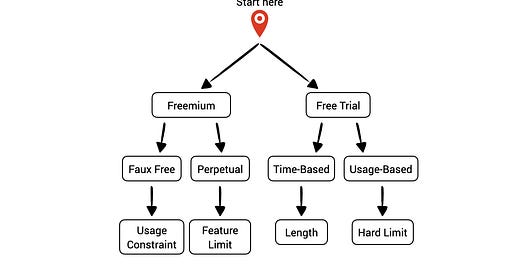








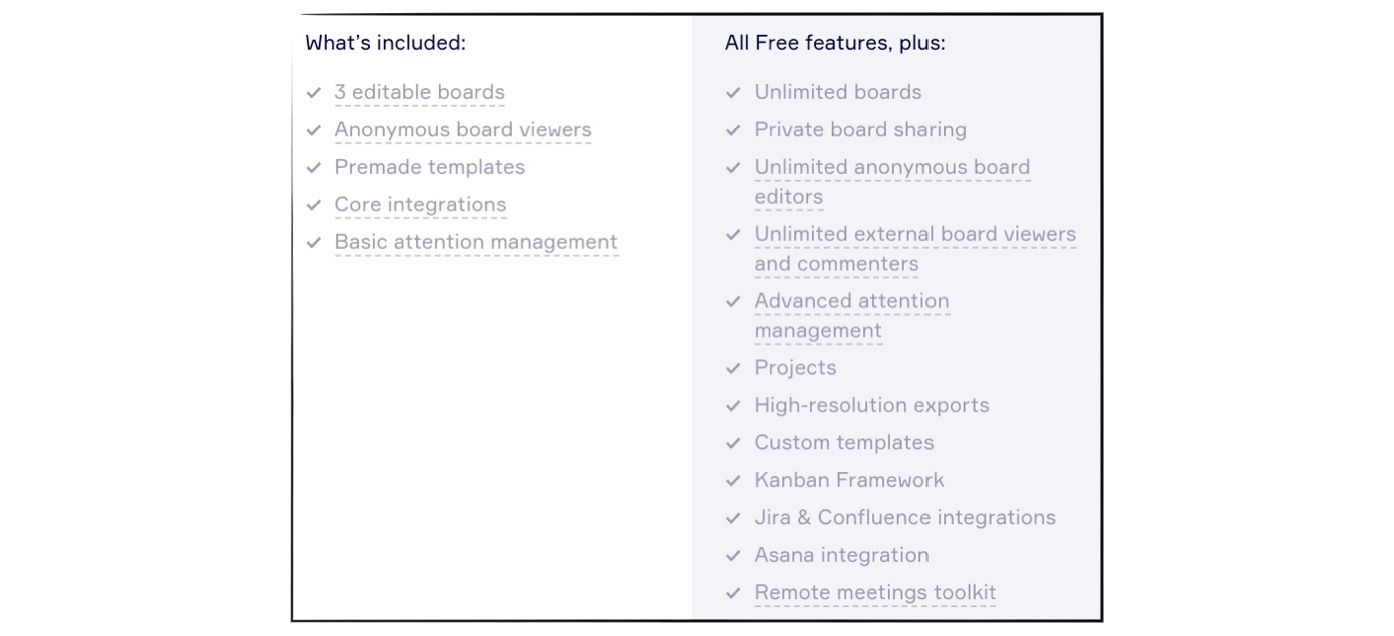

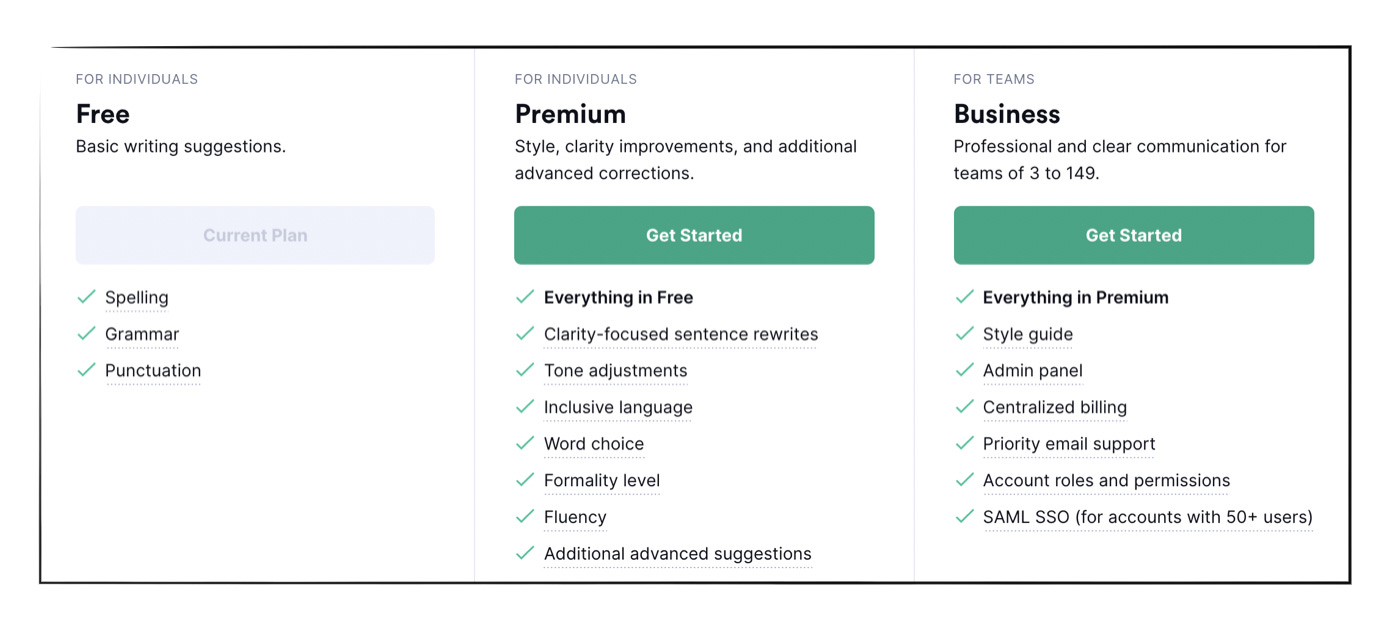

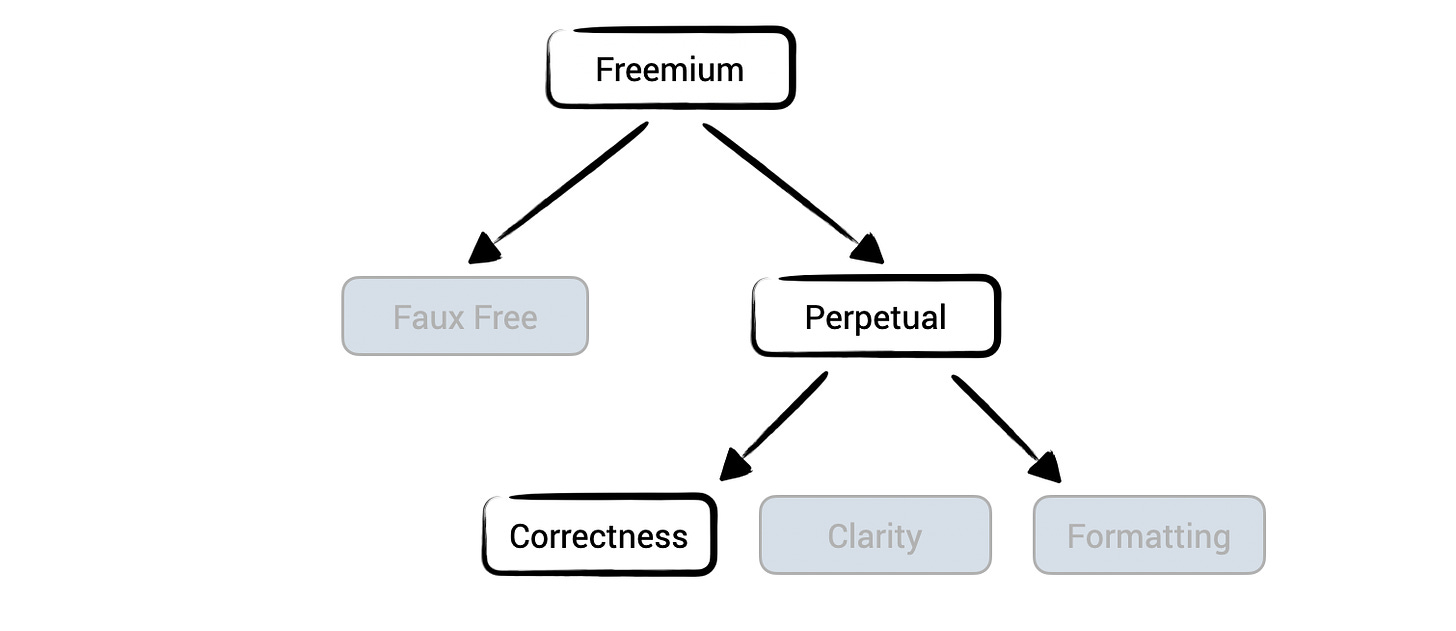
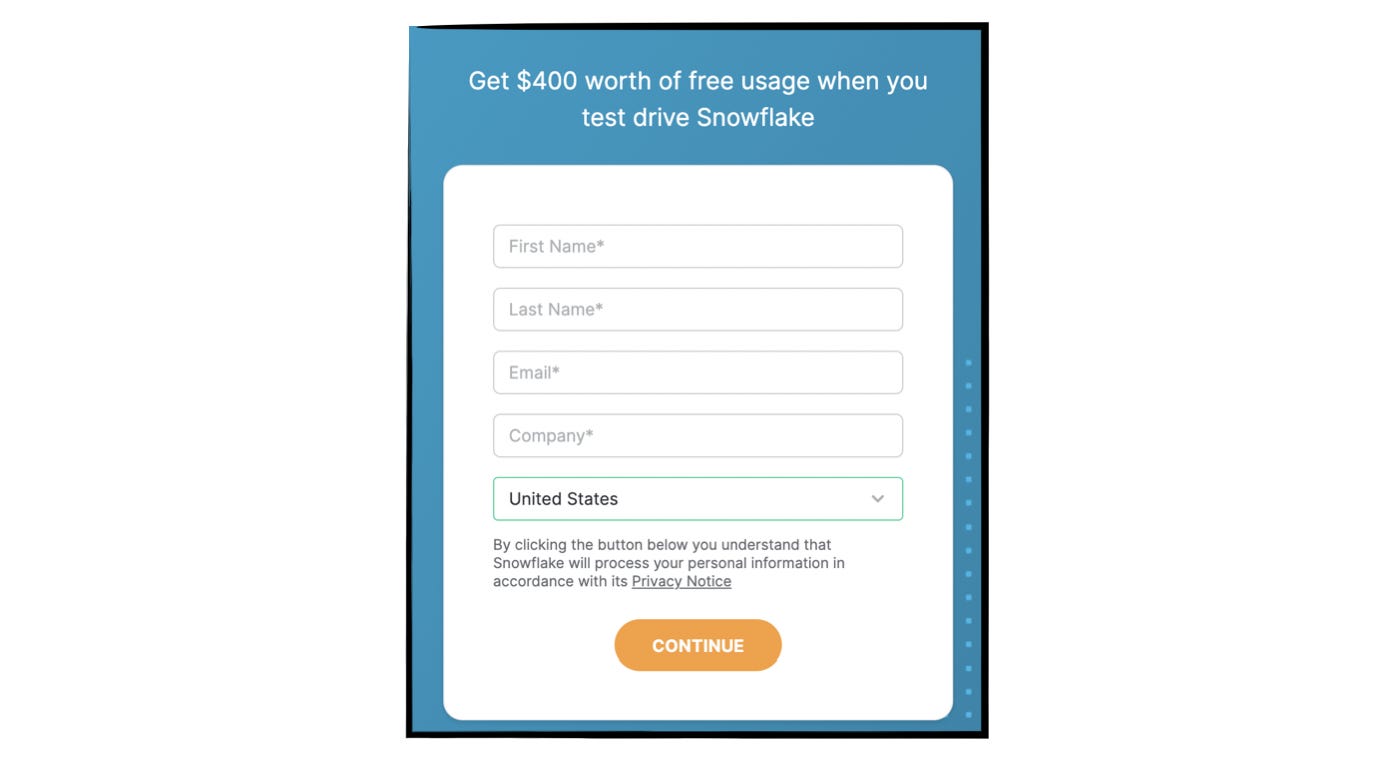
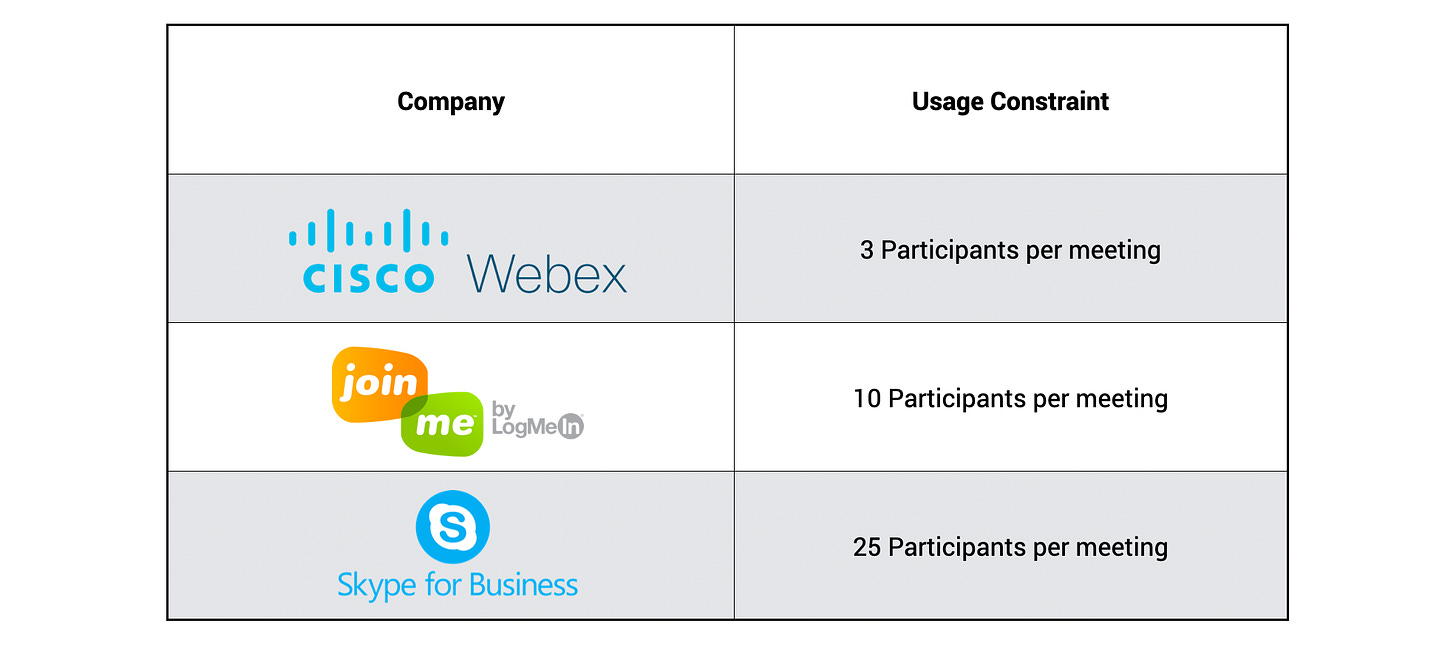
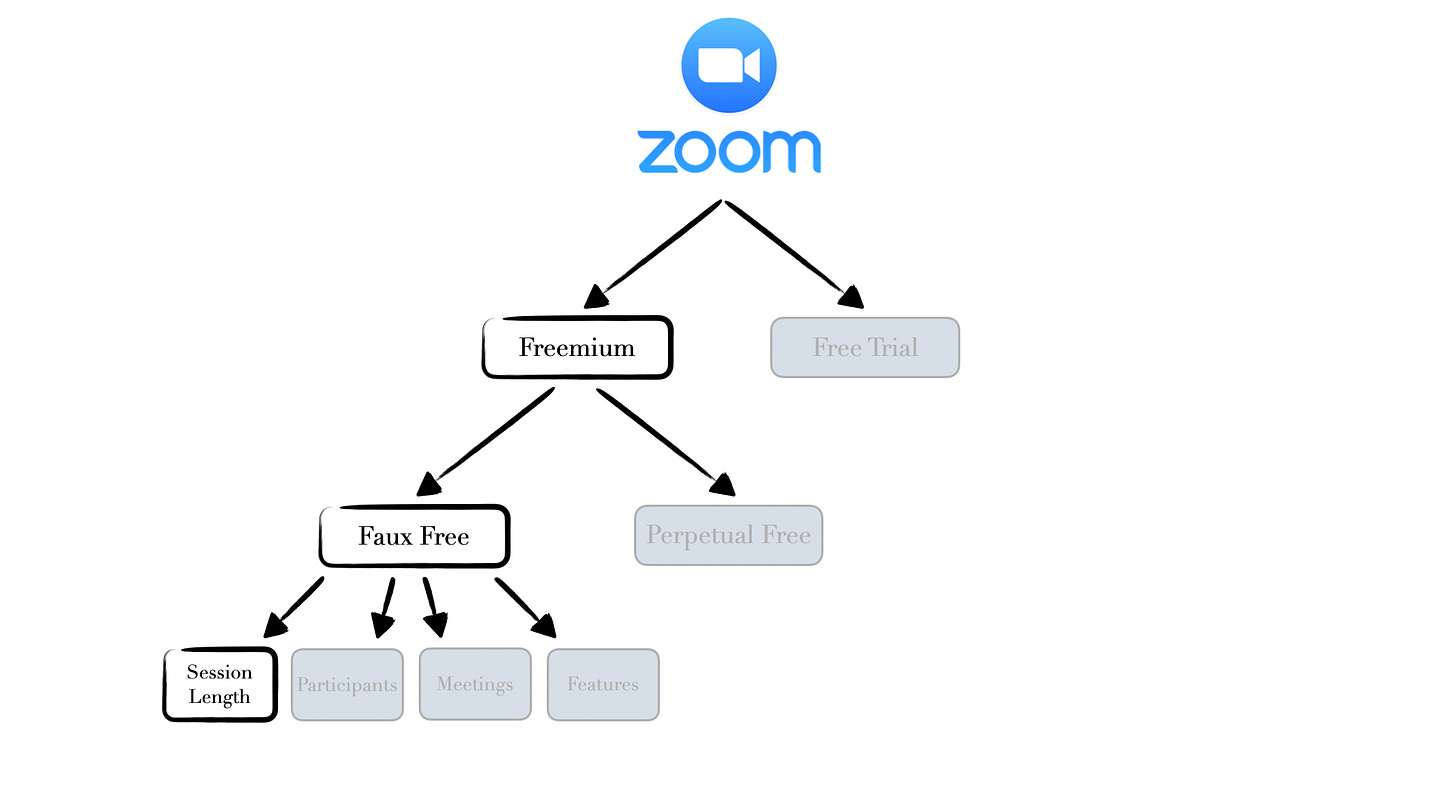
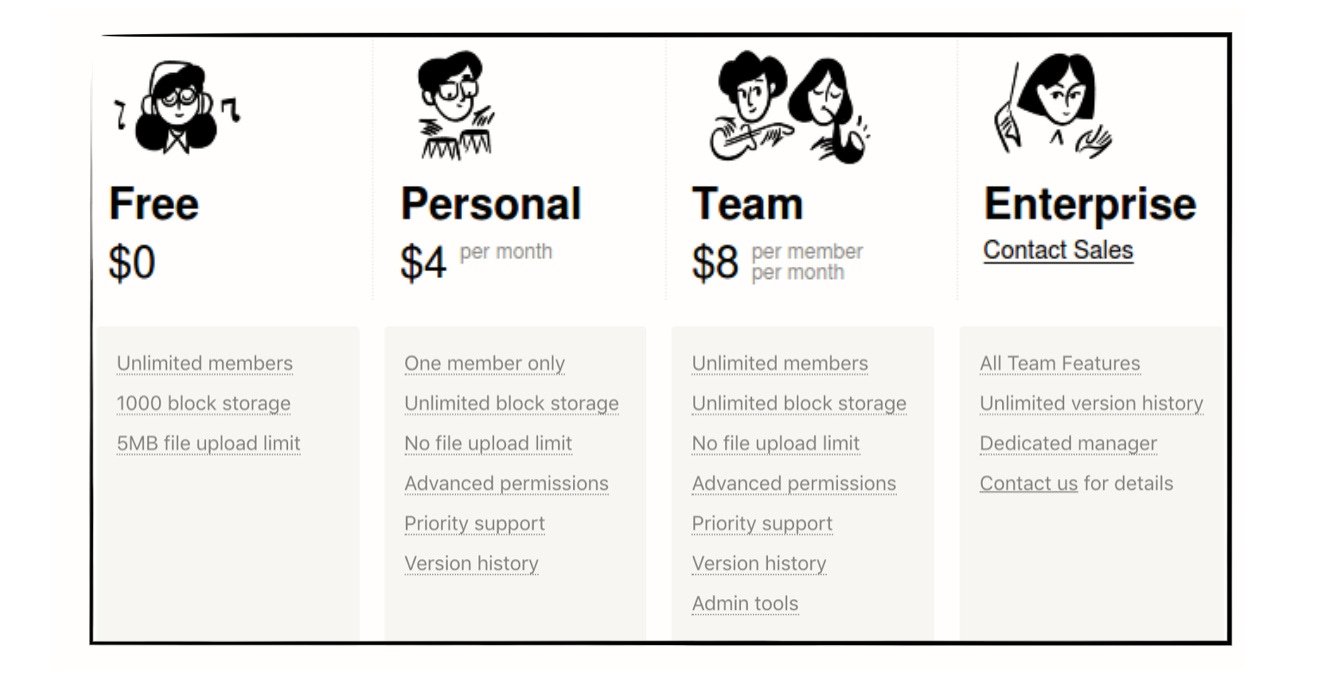

Loved this. Really!
Great guide